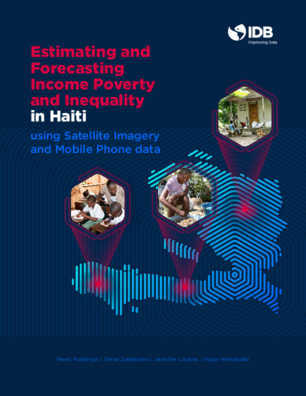Estimating and Forecasting Income Poverty and Inequality in Haiti Using Satellite Imagery and Mobile Phone Data
Date
Jun 2020
Reporting poverty and other social indicators on a regular basis is a challenge in several developing countries due to the high costs associated with collecting household survey data. The present report adds to the poverty literature on Haiti by disaggregating 2012 household survey data on income poverty, income inequality, and standard of living deprivations at the commune level using a Machine Learning framework. The resulting estimates where then used to validate the values of these indicators for 2014, which were estimated using features extracted from aerial imagery and anonymized call detailed records. In addition, satellite imagery was used to forecast these indicators for 2019. Our general findings can be summarized as follows: a) One out of four Haitians living in poverty reside in 10 specific communes in the Artibonite, Ouest, Nord-Ouest and Nord departments, b) Communes in the Ouest department tend to consistently perform better than the rest of the communes; c) Nord-Ouest communes increasingly became poorer and more deprived in 2019 relative to 2014, when the worst-performing communes were mainly located in Nord-Est and Centre; and d) some communes in the Sud Department became more deprived in 2019 relative 2014. Our results provide evidence that there is a need of incorporating a territorial perspective to all growth strategies considered by Haitian policymakers. Further, in the context of the COVID-19 pandemic, our results can prove useful when prioritizing the areas where social interventions should be focused.




